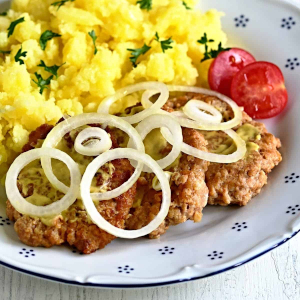We get back on the road today with our culinary expedition, this time stopping over for a few meals in the Czech Republic. While it shares some well-known dishes with its Eastern European neighbours, it also boasts some spectacular creations of its own!
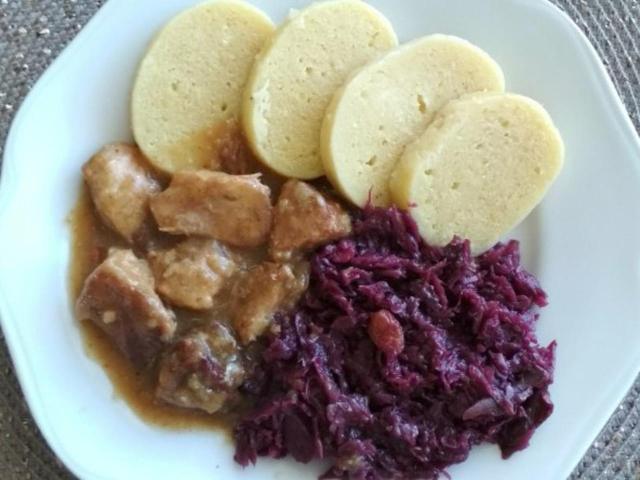
typically served with Dumplings or potatoes, and sauerkraut.
But Czech cuisine also offers a treasure trove of its own classic dishes which will surprise and delight newcomers to the country’s national cookbook.
Theculturetrip.com aptly describes Czech dining as, “a very traditional meat-and-potatoes cuisine, with dishes heavy on gravies and root vegetables. Winter is perhaps the best time to try Czech food when hearty soups take centre stage.” The meat is often pork; sometimes beef; very occasionally fish. Traditional Czechian flavourings typically include garlic, marjoram, caraway and fresh ground black pepper.
On our menu today
Sekaná Pečeně: Czech Meatloaf. Usually constituted of half beef and half pork, this is just one of many Czech dishes that rely on ground meat. Czechians commonly add a generous amount of bacon plus onions and garlic, and a few simple herbs. Cubed white bread like gfolks elsewhere use for Turkey Stuffing) and eggs are used as binders. Sekaná Pečeně is a family dinner staple.
Uzené: ‘Uzené’ is the Czechian word for ‘smoked’, but when you’re talking about food, it means ‘Smoked Meat’. And, whereas Smoked Meat elsewhere usually means beef brisket, in Czechia, it’s traditionally pork.
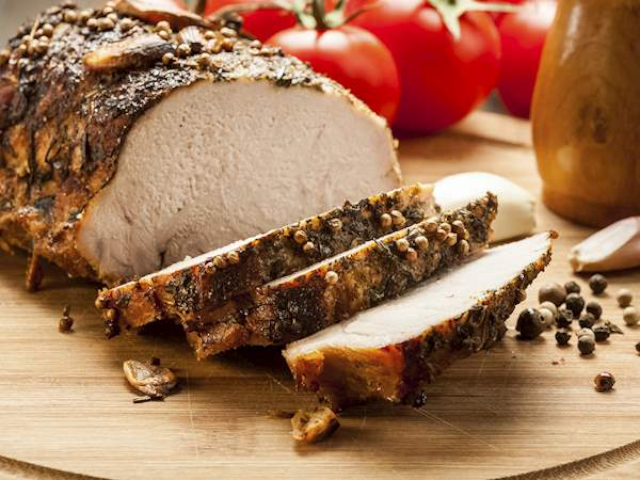
Different cuts are used, including loins, hams and ribs. Uzené is primarily served as cold cuts or appetizers, but – like the English Cottage Roll Ham – is sometimes boiled and served hot with dumplings or potatoes.
Moravský vrabec: One of many ‘metaphorically’-named Czechian dishes, it’s actually made from pork shoulder, cut into 1 – 2 in. / 2.5 – 5 cm chunks, marinated in onions, garlic, cumin and salt, and roasted. Moravský vrabec is usually served with cabbage (often Sauerkraut) and Potato Dumplings.
Česnečka: One of many hearty Czechian soups, this one is garlic-based and, for some old school types,considered as cure-all for any minor ailment, notably the common cold. It’s also, tellingly, called ‘Hangover Soup’.
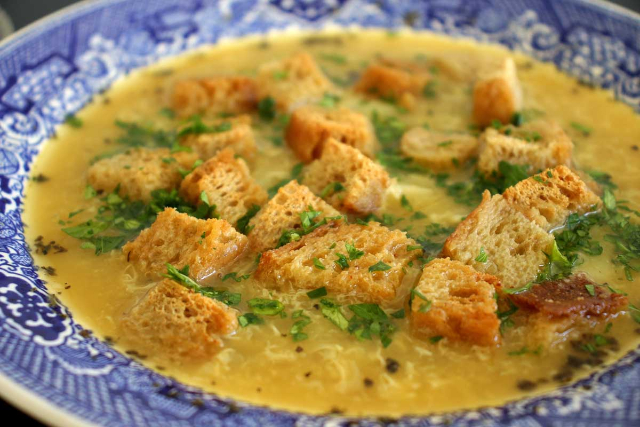
Garlic, Potatoes and any kind of stock you have on hand (beef, chicken or veggie) form the backbone of this aromatic dish. Spices (again) include marjoram and caraway. And you’ll need an egg to stir in just before serving (like Asian Egg Drop Soup). Make your own croutons using Caraway Rye bread.
Zelňačka: Yet another beloved Czechian soup, this one based on sauerkraut. It also features smoked sausage, onions, potatoes and sour cream. Zelňačka is usually made from chicken broth, flavoured with caraway, bay leaf, sweet (Hungarian-style) paprika and a little sugar, and thickened with a small Roux or a simple flour slurry.
Rajská Omáčka: Beef makes an appearance in this classic Czechian dish featuring Czech Tomato Sauce. The sauce is composed of beef broth, made from blade or shoulder, long-simmered with aromatics such as carrots, celery root, parsley root, onions, and garlic.
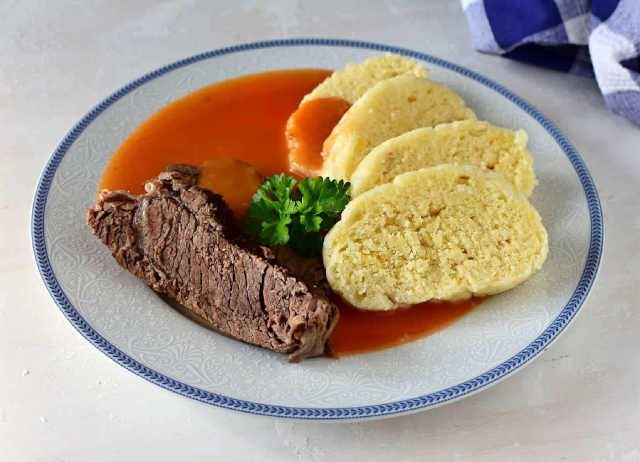
Spices and seasonings include whole bay leaves, allspice berries, black pepper berries and salt. For the sauce, add sugar, vinegar, minced onions and tomato paste. Use a small roux or flour slurry to thicken, adding it about half an hour before the end of cooking. Serve with the beef used to make the broth and dumplings.
Karbanáteki: Literally, ‘burgers’ or ‘meatballs’, this is actually a patty concoction reminiscent of your standard Crab Cake (see image, top of page). It’s usually made with minced pork, a blend of pork and beef, or even root veggies. Karbanáteki is typically bound with eggs, rolled in bread crumbs, and spiced with marjoram and garlic. Like other ‘cakes’, they’re fried in a shallow pan. Serve with mashed or boiled potatoes and fresh veggies. A lunch favourite.
Bramboráky: The Czech version of the ubiquitous Potato Pancake – but with some distinctive savoury differences that mark them as uniquely Czechian!
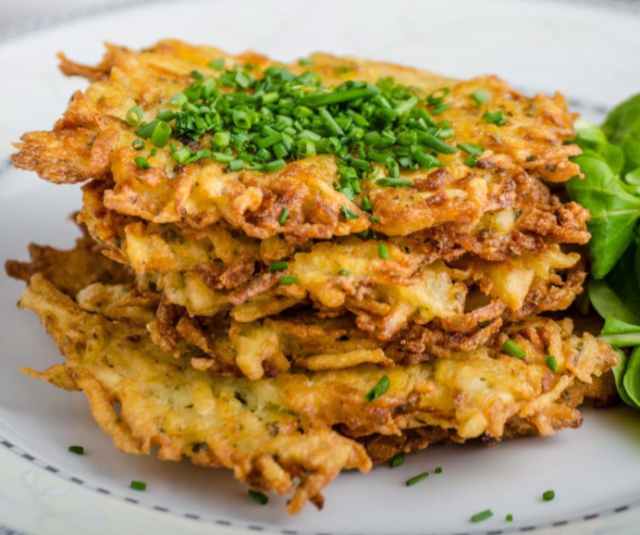
Based on the usual shredded potatoes, eggs and flour, Czechians add garlic, marjoram and caraway. Bramboráky are served in place of dumplings or potatoes, but are also enjoyed as a snack with an ice-cold pint of beer.
That’ll warm your cockles!
The foregoing is jut a small sample of the most popular, pan-Czechian foods, so many of which evolved to suit the needs of cold weather, and alpine dwellers. Tomorow, we’ll visit a typical Czechian bakery and delve into the country’s wealth of baked goods and desserts…
~ Maggie J.

